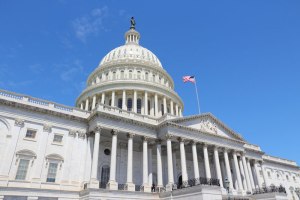
With the midterm elections receding, the country’s attention is already focused on 2020 and the most likely candidate to secure the Democratic presidential nomination. No matter which candidate it is, health care and the future direction of health care in the United States is likely to have a major role in the election—just as it did in 2018.
To the surprise of few, Democrats are now in the majority in the House of Representatives in the 116th Congress. Democrats gained 40 seats, and since they needed only 23 seats to take control of the majority, they now have some margin for dissent, particularly among their progressive wing members, while still maintaining a workable majority for purposes of governing.
Also, as expected, Republicans retained their majority in the Senate, adding 2 seats to their previously slim margin of 51 to 49. The move to divided government will make legislating beyond “must pass” legislation challenging, although the leadership in both the Republican Senate and Democratic House are very experienced politicians who have demonstrated an ability to compromise when it is in their best interest to do so.
Implications of Changes in State Governance
The biggest changes occurred at the state level. Democrats gained 7 governorships and as a result, Democrats will hold 23 of the 50 governorships. Democrats also attained full control of state government in 6 states, while Republicans lost full control of government to divided control in another 5 states. The switch in control at the state level takes on added importance, because most of those elected in 2018 will be in power for the 2020 decennial census, affecting the power distribution for the coming decade. In addition, the states can have an important role in determining the health legislation that states will be able to pass over the next 2 years.
The shift in control away from the President’s party is common in midterm elections, especially if there were “coattail effects” in the previous Presidential election. In the 2016 election, not only was Donald Trump not expected to win the presidency, with projections favoring Hillary Clinton until late in the evening of Election Day, Democrats were also expected to take over the majority in the Senate, in part because they were defending only 10 seats while Republicans were defending 24 seats. Instead, Republicans won not only the presidency, but also maintained a narrow margin majority in the Senate.
Whether or not the 2018 election represents a “blue wave” is debatable. Ballotpedia analyzed elections back to 1918 and determined that a loss of at least 48 seats is required to define a “wave,” which Democrats did in 2010 and 1994, but not 2018. What is clear, however, is that the 2018 produced the highest turnout in voting for any midterm election in the last 100 years—35 million voters more than had occurred 4 years before and the fourth best performance for Democrats in the last 70 years. Democrats have clearly been motivated to vote since the surprising election of Donald Trump as President. The confirmation hearings for Judge Brett Kavanaugh may have had a similar effect on Republicans.
Although health legislation at the national level will be challenging to pass, there is a greater potential for legislative action at the state level—particularly for Medicaid expansion in the 14 states that have not yet expanded Medicaid. Kansas, Wisconsin, and Maine have elected governors who favor Medicaid expansion. The legislature in Maine had previously passed legislation to expand Medicaid. However, the Republican governor, Paul LePage, was adamantly opposed to Medicaid expansion and refused to expand the program, despite the legislation. In North Carolina, the governor supports Medicaid expansion, and Republicans who had opposed Medicaid expansion lost their “super majority.” Voters also passed initiatives supporting Medicaid expansion in Utah, Idaho, and Nebraska, although the governor of Nebraska indicated he would not support the initiative if a tax increase would be required to fund the expansion.
Medicaid expansion may be reconsidered in 2 states that had previously expanded the program—Alaska and Montana. In Alaska, the newly elected governor is on record for criticizing the costs of the Medicaid expansion and in Montana, funding reauthorization was not supported by a ballot initiative.
States that wish to impose work requirements or consider other changes in the Medicaid program are likely to find a receptive Department of Health and Human Services. As of early December, 4 states had received waivers to include work requirements (including work training) as part of the eligibility for Medicaid and 10 more states have Medicaid waivers pending. Arkansas was one of the first states to include work requirements and reported that 72% of those on Medicaid were exempt from the requirement, but 8000 of those who were required to work had lost coverage over a 2-month period—frequently for failing to report their work efforts. Making sure Medicaid recipients understood the need to report their work experience or reasons for exemption has proven to be difficult.
Bipartisan Cooperation?
Although there appears to be little likelihood of significant health legislation at the national level, the public remains interested in having members of Congress work together to enact laws that address the major problems facing the country. A Kaiser Family Foundation tracking pollpublished in late November found that the public regards such bipartisan cooperation in the House as a top priority, although almost as many, 53%, regarded oversight on the Trump Administration’s action on health care, education, and the environment as a top priority.
As the 116th Congress convenes, it appears that the number of people signing up for insurance through the federal and state exchanges may be similar to that in 2018, despite the elimination of the ACA individual mandate, a reduced enrollment period, and a sharp cut in funding for advertising and enrollment aid. Some state exchanges are still open until mid-January, so how the final number of people enrolling for coverage in 2019 compares with the number for 2018 remains to be seen.
About the author: Gail Wilensky, PhD, is an economist and Senior Fellow at Project HOPE, an international health foundation, and also cochairs the Bipartisan Center’s initiative on the future of health care. She directed the Medicare and Medicaid programs, served as a senior adviser on health and welfare issues to President George H. W. Bush, and was the first chair of the Medicare Payment Advisory Commission. She is an elected member of the Institute of Medicine. (Image: Ted Grudzinski/AMA)

About The JAMA Forum: JAMA has assembled a team of leading scholars, including health economists, health policy experts, and legal scholars, to provide expert commentary and insight into news that involves the intersection of health policy and politics, economics, and the law. Each JAMA Forum entry expresses the opinions of the author but does not necessarily reflect the views or opinions of JAMA, the editorial staff, or the American Medical Association. More information is available here and here.